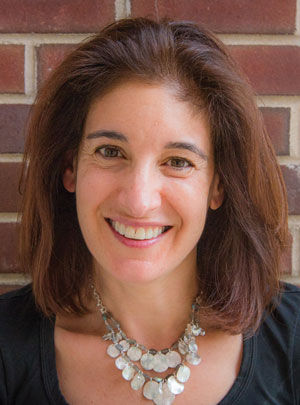Novel explores 1930s Jewish immigrant life in NYC’s Lower East Side
Published April 21, 2016
During the 1930s, few people saw that a global depression, mass migrations and extremist ideologies in Germany and Russia foreshadowed war. “Modern Girls” explores this era along with ways of being Jewish and being “modern” that are relevant today.
As the bookopens, Rose Krasinsky and her unwed daughter Dottie, 19, have the same problem, yet neither tells the other right away. Both are unexpectedly pregnant. For Rose, this is the seventh time, and she already has three boys and Dottie to care for.In alternate chapters, Dottie and Rose narrate their lives among other Jewish immigrant families in New York City’s Lower East Side from mid-August to mid-September 1935.
Rose, who limps “like a horse that had slipped in the snow,” is 42 but tells the world she is 39 because her husband, Ben, is 40.
“He smelled of oil and gas from the garage, but it was a clean smell, a manly smell that over the years had come to mean comfort and safety,” Rose says. “I had never been in a car myself, but I relished the scent for all it represented.”
Ben does not know much about Rose’s life in Russia,including her secret first love. Ben also doesn’t know that Rose has been saving her nickels and pennies in order to send Dottie to night school to earn an accounting degree.
Rose keeps kosher, keeps Shabbes, is frugal, cleans, cooks, sews and otherwise keeps the family together.Rose reads the Forverts, the free Yiddish Daily Forward, and is active in socialist women’s groups that help the poor; each Shabbes she gives freshly-baked bread to the needy.
Dottie helps pay the rent and on the day the novel begins, she has been promoted to head bookkeeper at work, with a raise to $23.50 per week. She realizes that she is a better numbers cruncher and a cheaper hire than a man would be.
Dottie is devoted to her boyfriend, Abe, and is in denial that their 3-year-old nonsexual relationship is not blessed by his parents, who have their eyes on Abe’s first girlfriend, Sadie Kraus, who is from a rich family. Dottie is fashion-conscious and dotes on her youngest brother, Eugene, whom she helped raise when their twin siblings were ill.
Rose and Dottie sometimes join in when the family men discuss politics. One night at dinner, she adds to the volley of opinions about the situation in Germany: “Jewish lives are definitely at stake. Did you read that over a hundred thousand people attended Julius Streicher’s anti-Jewish rally in Berlin?”
After dinner, as the men are still discussing politics, Rose pipes up from the bedroom: “Our government is letting him build an army because they fear the communists in Russia.”
The characters in “Modern Girls” hold a range of views about the rise of anti-Semitism in Germany in 1935. Rose’s brother Yussel has gone to Warsaw from Russia and pretends everything is OK, but he can’t get a visa to leave. Dottie plans ways to help him. Abe thinks the problems are not too serious. Dottie’s other love interest is Willie, a playboy and journalist who lands a Paris-based assignment for The New Yorker to write about the ominous situation in Germany and Europe. Willie’s parents know the situation there is volatile and dangerous; they will do anything to keep Willie in New York — and to stop his philandering with non-Jewish and nonwhite women.
The chapters cleverly intersperse how Rose and Dottie Krasinsky each deal with an unexpected pregnancy, the strong relationships, friendships and gossip in their tight-knit community, and the Jewish rituals and language that fill their daily lives.
Each woman, whom the others think of as “girls,” finds a “modern” solution.
Dottie and Rose each have family values yet remind us that there is never a one-size-fits-all answer to an unexpected predicament. These central characters share many points of view as a colorful cast of supporting characters chime in amid the rise of conservative, extremist and racist voices. The dialog, Yiddish terms and New York hangouts, like Yonah Schimmel’s Knish Bakery (since 1910), seem authentic.
The release of “Modern Girls” coincides with the New York Historical Society’s April opening of its exhibition “Anti-Semitism 1919-1939” and lends gravitas to today’s dilemmas: migrations, extreme poverty and ethnic wars.
This is an exciting debut novel by Brown, who (jennifersbrown.com) has published fiction, creative nonfiction and essays and holds an master’s degree in creative writing from the University of Washington.
Jan Garden Castro (jancastro.com), a St. Louis native, is author of four books, including “The Art & Life of Georgia O’Keeffe.” She is contributing editor for Sculpture Magazine and lives in Brooklyn.















